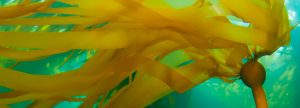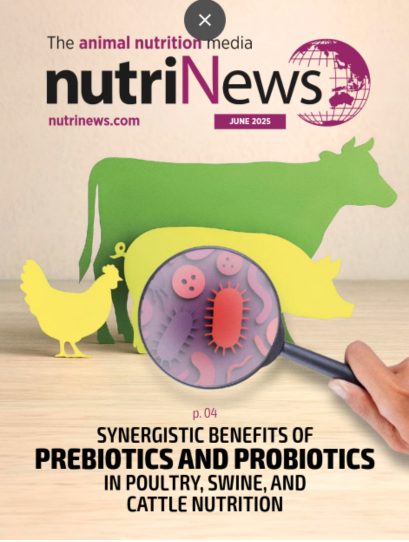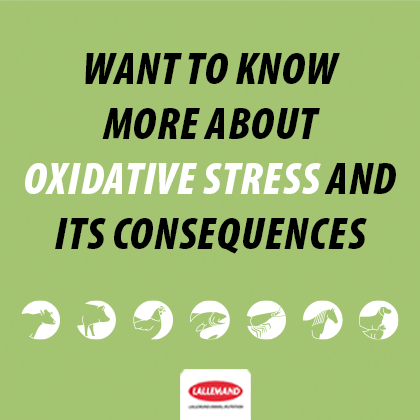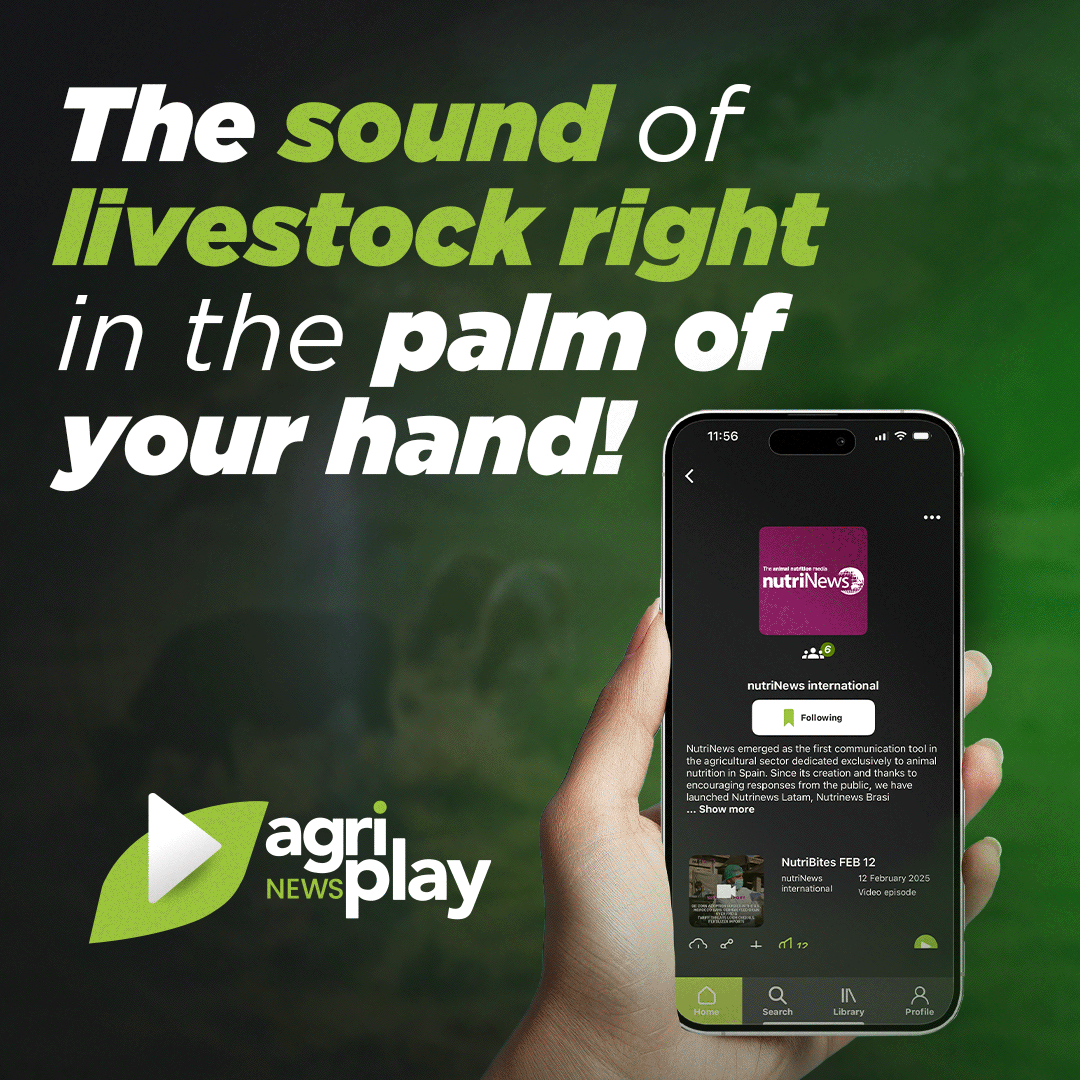This article reviews the utilisation of algae in animal nutrition, especially in ruminants. Algae can be a good alternative source of protein, vitamins, and minerals. The author gives a concise account on their composition an possible uses. Special attention is given to the utilisation of microalgae in animal feeding.
Why using algae to feed ruminants?
Algae belong to the EU non-exhaustive positive list of raw materials for animal feeding, and appears under different denominations:
-
Algae meals for algae, dried algae, algae meal, algae oil and algae extract.
-
Algae meal produced from microalgae.
Currently, algae are marginally used as raw materials due to their relatively high cost. However, they have been identified as important protein sources for the future. The animal nutrition sector needs to find alternative protein sources that can replace the traditional ones such as soybean; algae can be an option. Besides, new additives such as natural pigments, carotenoids and polyunsaturated fatty acids that can improve the quality of animal products are also needed.
The ban of the use of antibiotic growth promoters in January 1, 2016 forced the industry professionals to search for alternative natural solutions. Thanks to the prebiotic effects of algae oligosaccharides, algae can be part of the solution.
Algae have been traditionally used in human nutrition for hundreds of years, particularly in Southeast Asia. Also, they are used as protein supplements in animal feeds or as fertilizers.
They have been used for years to feed animals in poor and disadvantaged areas of coastal regions. During the First World War, on the Fench Atlantic coast, animals were given algae due to the scarcity of oats and forage. During a 20-year period (1960-1980), significant amounts of brown algae (Fucus and Sargassum genus) were added to animal diets.
The first studies on dietary supplementation of algae in animals intended for human consumption (swine, poultry and horses), showed that algae have good acceptability, digestibility and assimilation. Other studies demonstrated the beneficial effects of the algae, when added to the feed at levels of 5% to 10%.
Nutritional applications of algae in ruminants and other species
Macrocystis pyrifera
Macrocystis pyrifera is a species of brown algae that is used to form complexes with trace elements. Mixtures of sulfates with trace minerals such as copper, zinc, iron and manganese are dehydrated, pass through rollers, to obtain a crushed product.
These products are called SQM and aim to improve the bioavailability of trace elements.
The alginates, that are cell-wall constituents of the brown algae, are able to form chelates with divalent and multivalent ions.
The stability of the complexes depends on the structure of the alginates. The glucoronate blocks (salts of glucuronic acid) form chelates, while the mannuronate blocks form complexes with alternative forms, which are less stable. The trace elements are gradually released, according to the physico-chemical conditions and the digestion stages.

Ascophyllum nodosum
Ascophyllum nodosum is a technological ingredient used as a calcium sequestrant .
The ion exchange (calcium replaced by sodium) occurs when the meal is dispersed in water and the rheological properties of the alginate are activated as a thickener and gelling agent.

Algae used as anthelmintics
Certain algae are used as part of anthelmintic treatments. Alsidium helminthocorton , known as “Corsican moss”, acts on pinworms and is used in dried or cooked form. Digenea spp is commonly used in Asia and Cuba, while Ulve durvillaea is used in New Zealand.
Two metabolites are responsible for the deworming or anthelmintic activity: the kainic acid (3-carboxymethyl-4-isopropenyl proline and domoic acid, or 3-carboxymethyl-4- carboxymethyl hexa-1,3 diene), and the proline, both acids structurally close to the glutamic acid.
The kainic acid and the proline are effective molecules against pinworms and roundworms.
Nutritional properties of algae
Although currently they are marginally used because of their relatively high cost, they attract lots of attention due to their nutritional properties and the posibility of being used as additives. They are rich in minerals, fiber, protein, vitamins and lipids, which put them at the leading edge of research and development.
Mineral content
Minerals can represent up to 36% of the dry matter.
This fraction offers a great diversity:
- Macronutrients such as sodium, calcium, magnesium, potassium, chlorine, sulphur and phosphorus.
- Essential micronutrients such as iodine, iron, zinc, copper, selenium, molybdenum and other trace elements such as fluoride, manganese, boron, nickel and cobalt.
Iodine is a special case, since studies in swine have demonstrated that the supplementation with 30 mg iodine/kg of feed resulted in increased iodine levels in muscles (from 23 to 138 mcg/kg). Similar results were observed in beef cattle and laying hens.
Carotenoid content
Algae contain carotenoid pigments (essentially xanthophylls: fucoxanthin, lutein, zeaxanthin) and carotene (β-carotene). Besides pigmentation, carotenoids have other properties; for example, and are used as powerful antioxidants capable of fixating oxygen and deactivating peroxide-rich radicals.
The addition of carotenoid-rich algae to poultry diets improves egg yolk color.
In dairy cows, carotenoids reduce somatic cell count and improve the reproductive parameters, suggesting an improvement in the immune activity.
Fiber content
Total fiber content in algae varies between 32% and 50%.
Within the insoluble fibers, there is a cellulosic fraction , which is present in low levels, particularly in red algae.
The insoluble fiber is associated with reduction of transit time through the colon. The soluble fiber fraction represents 51% to 56% of total fiber in green and red algae, and 67% to 87% in brown algae.
The soluble polysaccharides (agar, carrageenan and xylan) can be considered to be the most important fraction in red algae (Gracilaria verrucosa, Chondrus crispus, Laver, Palmaria palmata). Agar and carrageenan are sulphate galactose and anhydrous galactose polymers. Xylans are neutral xylose polymers.
In brown algae ( Ascophyllum nodosum, Fucus vesiculosus, Himanthalia elongata, Undaria pinnatifida ), the soluble fibers are laminarans, alginates and fucans. Laminarans (β-glucans) are neutral glucose polymers. Alginates are polymers of mannuronic and glucuronic acids.

Soluble fiber is usually associated with hydration capacity, which (through absorption, retention and swelling) affects the bolus transit through the stomach and small intestine. It also has an impact on cholesterolemia and glycemia.
Classification according to the degradation by intestinal and rumen bacteria:
- Agar, carrageenan, ulvan and fucanare very soluble.
- Laminaran xylans are totally degraded and immediately produce short chain fatty acids.
- Alginates are partially degraded, resulting in the formation of elimination oligomers: the β-oligomers have showed prebiotic effects in rats (in vitro and in vivo), which can be seen as an opportunity for field application.
The oligosaccharides are saccharide polymers that have prebiotic properties related to colon microbial flora. They can be added to the feed to block bacterial colonization and stimulate intestinal immune response.
Protein content
The protein content in algae is variable. Brown algae have a low protein content (5%-11% on a DM basis). In red algae, it varies between 30-40% on a DM basis, which is comparable with soybean. Green algae have a significant protein content, which can reach 20% of their DM at certain times of the year.
Spirulina, or freshwater microalgae, is well known for its high protein content (70% on a DM basis). A mixture of green algae was included in broiler diets (at a 10% level) and this resulted in a higher daily weight gain.
Vitamin content
Despite seasonal variations, certain have characteristc vitamin contents:
-
High levels of provitamin A (red algae)
-
High levels of vitamin C (brown and green algae)
-
High evels of vitamin E (brown algae)
Vitamins of the B complex (particularly B2 and B3) are found in significant amounts. The high levels of B12 vitamin represent an advantage over land plants, which atotally lack of it.

Lipid content
The lipid content in algae is very low: 1%-3% on a DM basis.
The lipid content in Ascophyllum nodosum can reach up to 5%. In qualitative terms, lipids from algae differ from lipids of land plants.
They contain, predominantly, unsaturated fatty acids.
- Green algae have a fatty acid composition closer to that of land plants, with a much higher acid content of oleic acid (C 18: 1) and alpha-linolenic acid (ω3 – C18: 3).
- Red algae have high levels of 20-carbon polyunsaturated fatty acids. This is a unique characteristic in the plant kingdom, as these fatty acids are frequently found in the animal kingdom. The levels of eicosapentaenoic acid (EPA, ω3 – C20: 5) are particularly high, constituting up to 50% of polyunsaturated fatty acids in the genus Porphyra. The arachidonic acid (ω6 – C20: 4) is also present. The 18-carbon polyunsaturated fatty acids reach levels of 10% of total fatty acids in Porphyra.
- In brown algae, there is a similar distribution of fatty acids, although the content of linolenic acid is high.
Effects of dietary supplementation with algae in ruminants
The use of marine algae in animal diets improves overall health and animal performance. The skin quality is improved, the estrous cycle is normalized, sperm quantity and quality are increased, resulting in improved conception and birth rates.
Ascophyllum can be used as an iodine source in foodstuffs for human consumption (meat, milk and eggs). Human food should contain adequate iodine levels to fulfil the metabolic requirements of the population.
Besides being used as a corrective of soil acidity in agriculture, Lithothamnium or maerl is a very interesting option for animal feeding, especially for ruminants. It has many beneficial effects, such as:
- improving the synthesis of rumen microflora
- promoting nutrient assimilation
- correcting excessive acidity in animals fed diets containing high levels of corn silage, reducing the risk of acidosis.
- helping to meet calcium needs formilk production.
- Contains 0.27% sulphur, which plays an essential role in the synthesis of sulphurated amino acids and, in turn, proteins, vitamins and redox control in the rumen.
The real digestive utilisation of marine magnesite is of (approx.) 75%, which demonstrates that its ingestion does not cause any metabolic disorder.
Microalgae
These primitive aquatic organisms reproduce by simple division, once or twice a day, and are considered to be the most productive plants in the world. Spirulina spp. is among the most well-known edible microalgae.
Spirulina is an important source of nutritional compounds of high biological value. It has been known for centuries by populations from many countries such as China, Greece and Mexico.
Composition of the spirulina
-
60%-70% protein cintaining all the essential amino acids, with excellent bioavailabilty.
-
Rich in chlorophyll and phycocyanin.
-
Polyunsaturated fatty acids (PUFA), mainly of the n-3 series, such as the docosahexaenoic acid (DHA). Also, it is an interesting source of acids, acting as a precursor for gamma-linolenic acid, prostaglandins, leukotrienes and thromboxanes.
-
Antioxidants such as phycocyanin and carotenoids, which can act as provitamin A and prevent the formation of reactive oxygen species (contributors of oxidative stress that lead to chronic diseases such as cancer, and also aging).
-
Vitamins (it has almost all the essential compounds), including vitamin A, vitamin B and tocopherols. A peculiar finding for an herbal product is that the spirulina contains vitamin B12, showing a close phylogenetic liaison between these algae and the bacteria that produce this vitamin.
-
Minerals: macro minerals (Na, K, Ca and Mg) and micro minerals (Fe, Zn, Mn and Cu).

Due to the biologically active substances mentioned above, spirulina has been added to feeds for rabbits, swine, poultry, fish and ruminants.

The spirulina and the commercial use of cultured microalgae
The commercial use of these cultures represents an advance for the food industry in general, and for the animal feed industry in particular. Microalgae are protein sources with possible applications in this sector due to their high protein value.
Research studies show an enormous variability of the composition , with varying proportions of protein, fatty acids and carbohydrates. This constitues and advantage when including them in diets for different animal species.
The main advantage of the microalgae is their amino acid profile. In some some of the examined species, it is comparable with the best traditional protein sources.
Microalgae also have high levels of vitamins and trace elements, besides a low ash content.
The various species of microalgae differ in composition, as well as in the forms of use and treatment, depending on the animal species to be fed.
Several field trials have been carried out in aquaculture species, since this is the sector where microalgae are more frequently used as part of the diet. Studies in poultry have also been consulted; they show that inclusion levels of 5%-10% can be safely used to replace traditional protein sources.
Currently, researches are focusing on the physyco-chemical characterization and the nutritional assessment of different microalgae strains. Their utilisation in ruminant feeding is an interesting field to explore. Recent studies suggested that supplementation with algae causes a selection of protozoan populations in the rumen, thus affecting the proportion of short chain fatty acids.
It is also known that the inclusion of high amounts of algae in the concentrate can affect animal performance and reduce the intake. For this reason, further studies are needed to determine at what dosis the beneficial effects are maintained without affecting performance.
Application of spirulina in ruminants
It is known that milk and dairy products are currently used as functional foods. Therefore, the attention has been focused on the enrichment of milk fat with PUFA. These acids, which cannot be synthetized by humans or animals, have beneficial effects. This is particularly true for the the n-3 series. They can protect against cardiovascular disease, atherosclerosis, skin diseases, and arthritis. These fatty acids are absent or reduced to a minimum level in traditional diets fed to dairy cows, while they are present in very low levels (less than 0.1%) of total fatty acids in dairy products.
The studies on spirulina in dairy cows have showed positive results which have a direct impact on productivity:
- The animals fed spirulina had an increase of 21% in milk production.
- Also, increases in milk fat (between 17.6% and 25.0%), milk protein (9.7%) and lactose (11.7%) were observed in cows fed microalgae, compared with controls.
These results can be attributed to the influence of spirulina on the synthesis of microbial protein, the reduction of rumen degradation, and also to its rich composition.
Moreover, these results highlight the positive effects of spirulina on the health of dairy cattle. The use of spirulina has been associated with a significant reduction in the somatic cell count, which improves milk nutritional value. Also, the animals fed spirulina showed better body condition compared with controls.
Studies in bulls demonstrate that their sperm quality improves when spirulina is added to the diet. Sperm motility, concentration and viability after storage were positively affected by the algae. However, further studies are needed to better understand the relationship between sperm quality and the addition of spirulina to the diet.
Use in small ruminants
The knowledge about the effects of spirulina on sheep products and productivity remains a relatively unexplored field. Very few studies have been published in this area.
In one of the studies, lambs fed milk from sheep fed spirulina showed higher live weight and higher daily weight gain compared with controls. Also, lambs had higher birth weight when ewes were fed during pregnancy.
Conclusion
It seems clear that algae can bring benefits when added to animal diets. They can be used as direct raw materials, for utilization of their different nutrients, or as a source of compounds with prebiotic action. There is a clear need for furtherresearch on the use of algae in ruminant production.
This articlas was originally publishe in nutriNews Spain, with the title El uso de las algas en alimentación animal – Rumiantes












